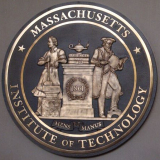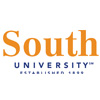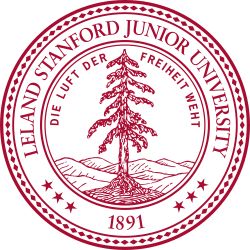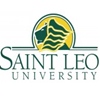Penn State Worthington Scranton is the Penn State University Worthington Scranton. Here is a detailed introduction to the school:
School Overview
Location: Located in Dunmore, Pennsylvania, in the northeastern part of the state, it belongs to the Greater Scranton area. It is conveniently located near many major roads and highways, making it easy for students to travel to nearby cities and regions.
School History: The school was founded in 1923 and was originally a branch of Pennsylvania State College in Scranton, mainly offering night school technical courses. In 1951, the school was renamed Scranton Center and became part of the General Extension Department of Pennsylvania State University. In 1953, its courses were reorganized into associate degree courses. In 1968, the school moved to its current location and was renamed Penn State University Worthington Scranton. In 1995, the school began to offer its first undergraduate bachelor's degree program and officially became a campus of Pennsylvania State University Commonwealth College on July 1, 1997. On May 1, 2018, the school was officially renamed Pennsylvania State University Scranton.
Campus size: The campus covers an area of 45 acres, which is relatively small, but has a beautiful environment and complete facilities, providing students with a comfortable learning and living environment.
School nature and ranking: As a federal campus of Pennsylvania State University, the school is a public university. In mainstream university rankings such as US. News, no separate rankings for the school were found, but Pennsylvania State University as a whole has a high reputation and ranking among American universities. Its main campus, Pennsylvania State University Park, ranked 77th in the 2024 US. News American University Comprehensive Ranking.
Academic Situation
Professional Settings: Offers a variety of associate and bachelor's degree programs, covering business and management, computer science and engineering, family and social work, nursing and emergency medicine, liberal arts, engineering technology, security and law enforcement and other fields. Among them, the more common majors include business administration, information science, family studies, construction engineering technology, criminal justice and security, etc.
Teaching Resources and Faculty: With 108 academic staff, although the scale is small, the faculty is strong. Some professors have obtained tenure, which is conducive to the school retaining excellent teacher resources and providing students with stable and high-quality teaching. The school focuses on teaching quality and adopts a small-class teaching model. The number of students in each class is relatively small, so students have more opportunities to interact and communicate with teachers, and can get personalized guidance from teachers, which helps to improve learning effects.
Teaching features: Focus on practical teaching, through internships, experimental courses, project practice, etc., let students apply theoretical knowledge to practice, cultivate students' practical operation ability and problem-solving ability. For example, students majoring in computer science and engineering have the opportunity to participate in actual project development and exercise programming and system design capabilities; students majoring in business can understand the operation and management of enterprises through internships and accumulate practical experience.
Student life
Accommodation: The school provides students with a variety of accommodation options, including on-campus dormitories and off-campus apartments. The on-campus dormitories are well-equipped to provide a safe and comfortable living environment, which is conducive to communication and interaction between students and enhances friendship among classmates; the off-campus apartments provide more independence and freedom, suitable for students who like to live independently.
Clubs and Activities: There are a variety of student clubs and organizations, such as community human service organizations, engineering clubs, non-traditional student organizations, blue and white associations, etc. Students can participate in corresponding club activities according to their interests and hobbies, expand their social circles, make like-minded friends, and enrich their extracurricular life. The school also regularly holds various cultural activities, academic lectures, sports competitions, etc., providing students with a rich and colorful campus life experience.
Sports Activities: As a member of the United States Collegiate Athletic Association (USCAA) and the Pennsylvania State University Athletic Conference (PSUAC), the school's sports team actively participates in various sports events, including baseball, basketball, cross-country, football, softball, volleyball and other projects. Students can participate in or watch sports competitions, feel the charm of sports competition, and enhance their physical fitness and team honor.
Admission Situation
Admission Requirements: The school does not admit all applicants, and has a certain degree of selectivity. Taking 2007 as an example, the average SAT language scores of students at that time were between 430-530, and the math SAT scores of those admitted were usually between 420-530. For international students, they are also required to provide English language proficiency test scores, such as TOEFL or IELTS.
Admission ratio: There is no clear data on the specific admission ratio, but judging from its admission requirements, the school will comprehensively consider factors such as students' academic performance and comprehensive qualities when recruiting students to select students who are suitable for the school's educational philosophy and professional requirements.
-

Harvard University
-

Massachusetts Institute of Technology
-

South University
-

University of West Georgia
-

Stanford University
-

Northwest Nazarene University
-

Hawaii Pacific University
-

Shorter University
-

Nova Southeastern University
-

Saint Leo University
-

Mesoamerican University
-

Istmo University
-

Mariano Galvez University of Guatemala
-

Regional University of Guatemala
-

Galileo University
-

Francisco Marroquín University
-

Rafael Landívar University
-

University of the Valley of Guatemala
-

University of San Carlos of Guatemala
-

Technological Institute of Tlaxcala Plateau
-

Golfo University
-

Technological University of South Sonora
-

Technological University of Huejotzingo
-

Tizimín Institute of Technology
-

Chilpancingo Institute of Technology

